While the concrete sill on the practice window (made with our new secondhand concrete mixer) is drying, Jean Michel is planning the logistics for the two large windows in the kitchen. We’ve already bought two stone sills for the rear façade window through leboncoin.com (where else ?) but we need bricks for the side window and the barn.
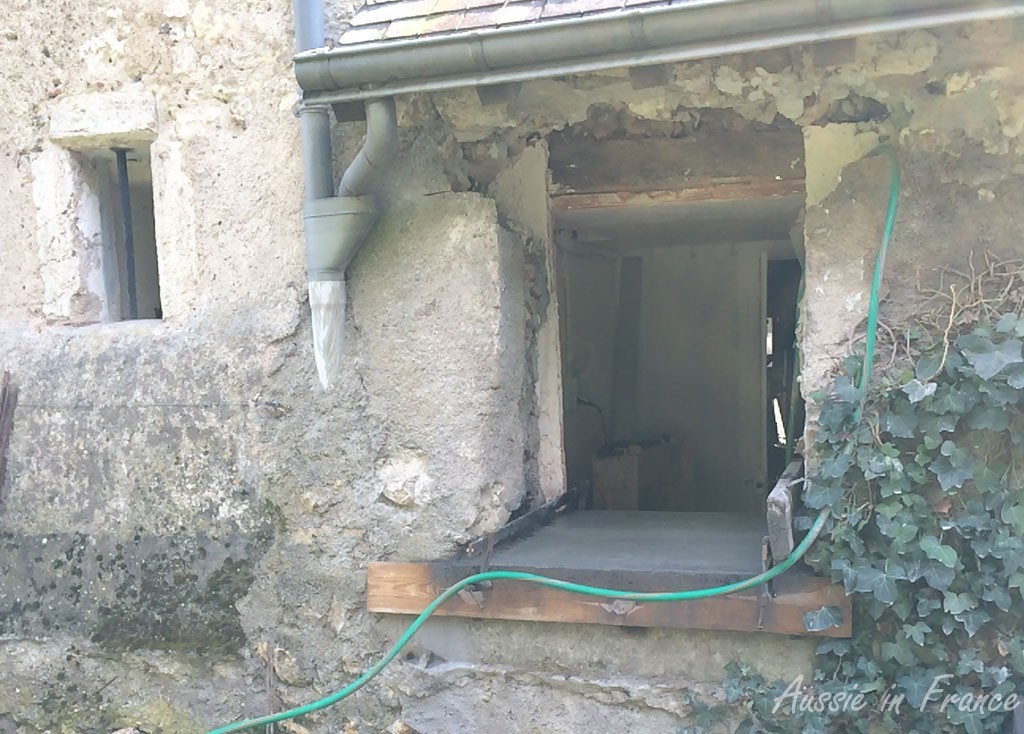
We can’t use new bricks of course as they would not blend in with the original architecture. Jean Michel sees an advertisement on leboncoin.com for 200 bricks for 50 euro. Considering that another vendor is asking 2.50 euro a brick, it seems a pretty good offer. He phones and organises to pick them up next afternoon. The vendor lives about 40 minutes away.
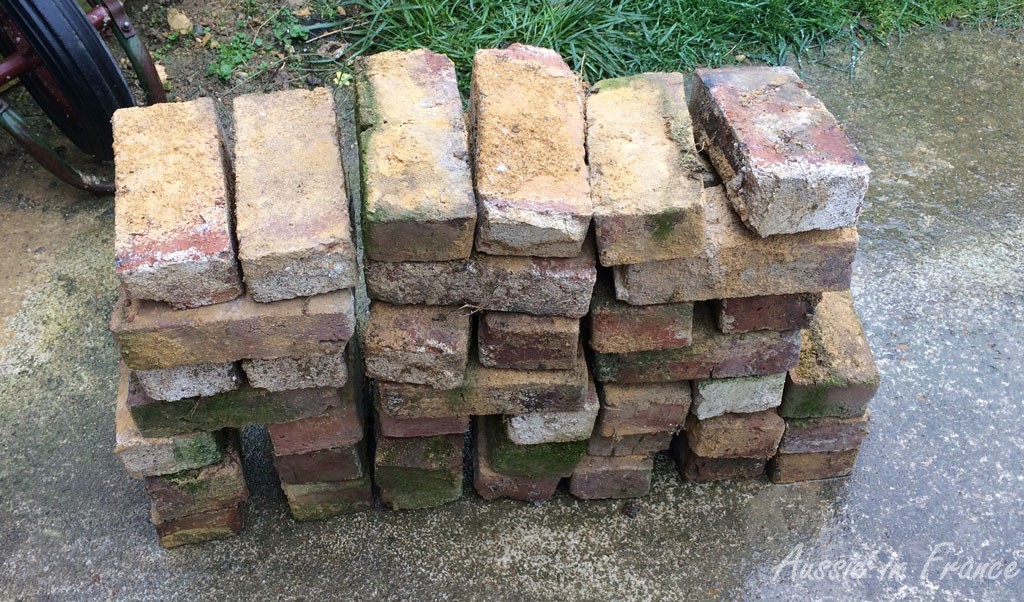
When we arrive, we see the first stack of bricks waiting for us. We load them in the car along with another stack slaked in mud. Fortunately, it’s stopped raining. Before we go and pick up the rest from his grandmother’s house another 30 minutes away, the vendor shows us a couple of other things he has for sale, including three beautifully preserved glass cloches once used to grow seedlings. He’s selling them for 70 euro a piece but you have to take the three.
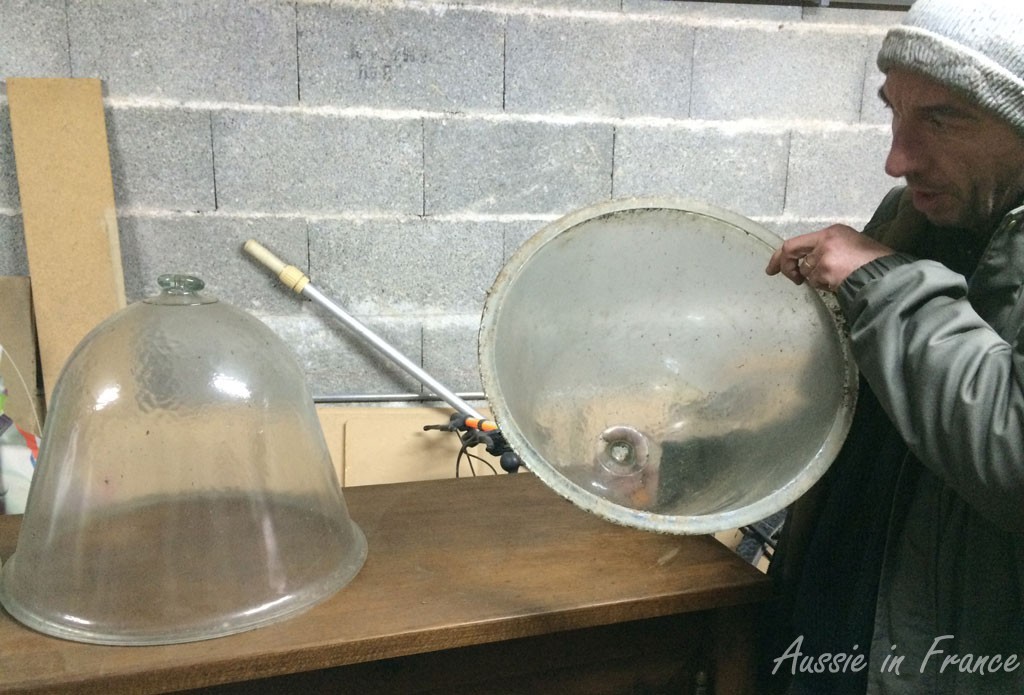
His grandmother was still living in the house until she died peacefully in her sleep last December, just 4 days after she turned 100. The house turns out to be a priory built in the 12th and 16 centuries and still has a chapel at the rear. Unfortunately he doesn’t have the key with him but we can make out the vaulting through the grille.
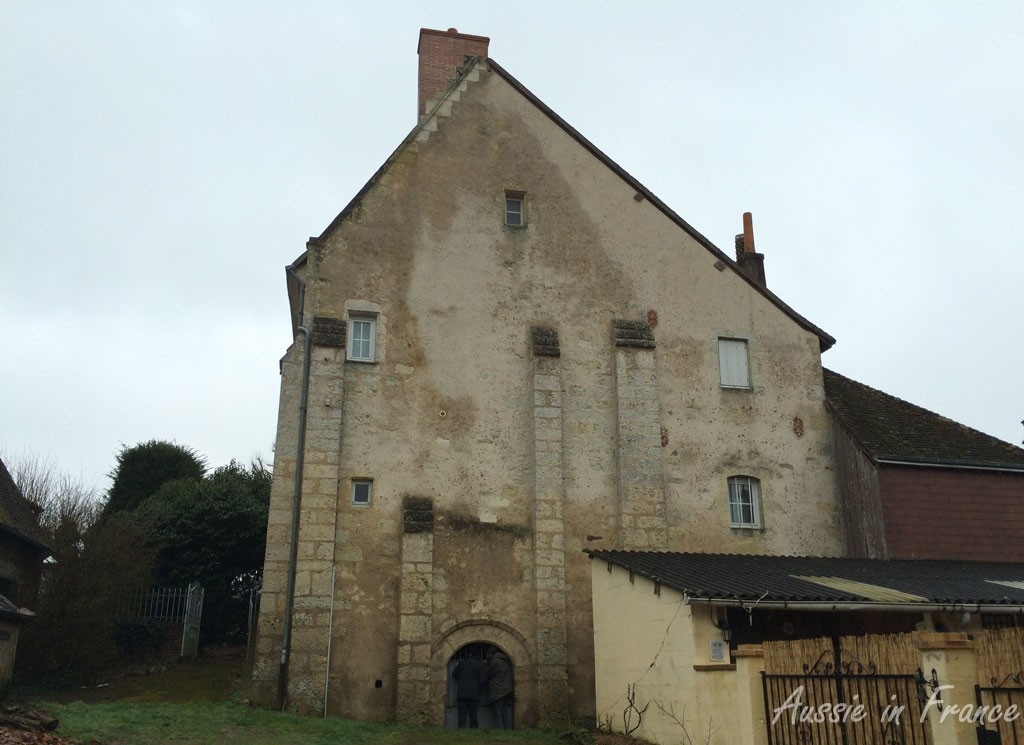
The renovations on the front façade, with its roller blinds, are a little bit modern for our taste but the vendor seems very proud of them.
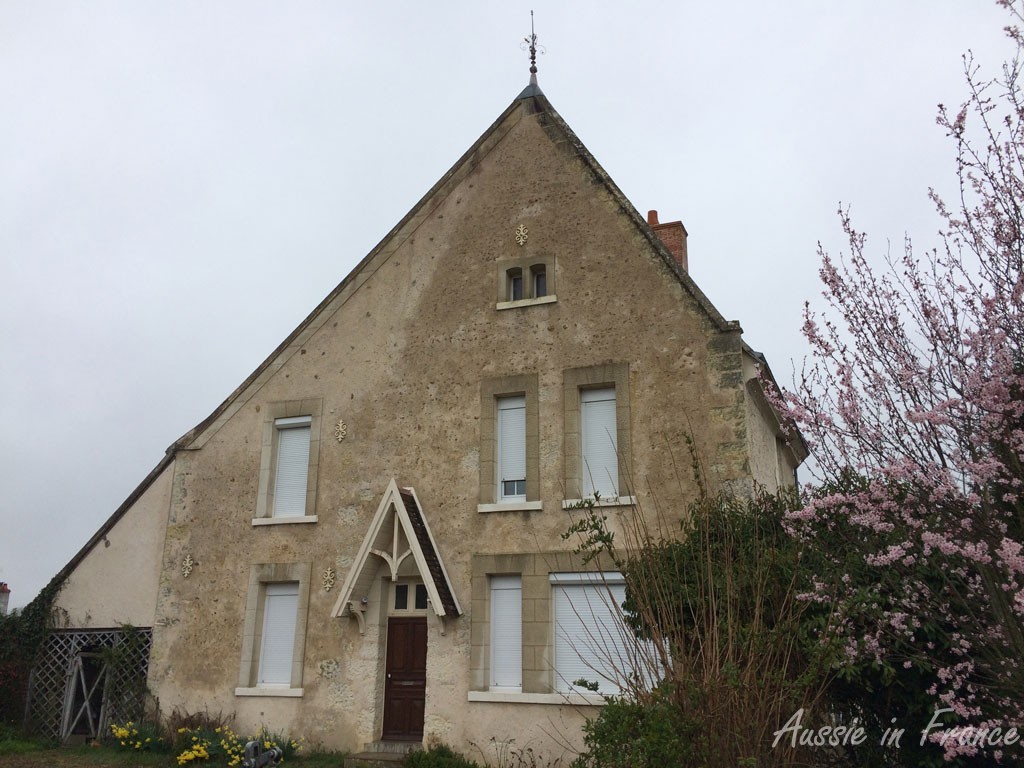
We load the rest of the bricks into the car. I’m a bit worried about the weight. It may be a Volvo stationwagon but there are 244 whole bricks, each weighing about 2 kilos, and another 50 or 60 broken ones. That’s over 550 kilos.
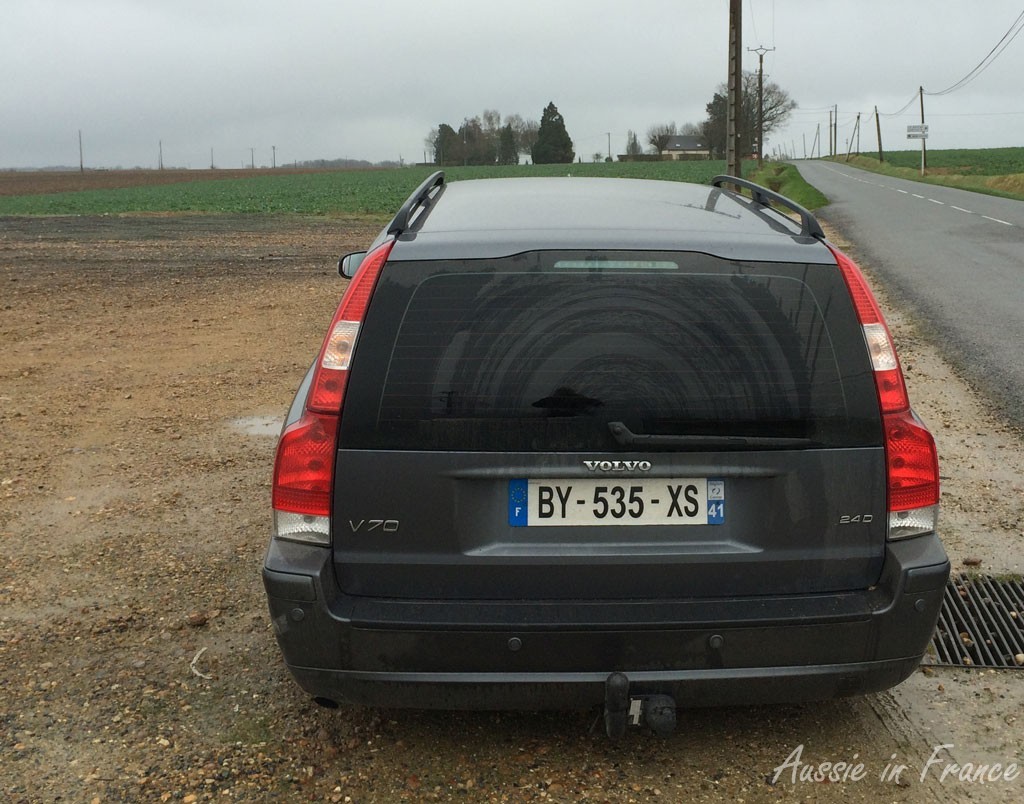
As we drive very carefully over the first speed bump, we hear a terrible grating noise casued by the trailer coupling. Hmm … The next speed bump looks even higher so we stop and reload the bricks so that the weight is more evenly distributed.
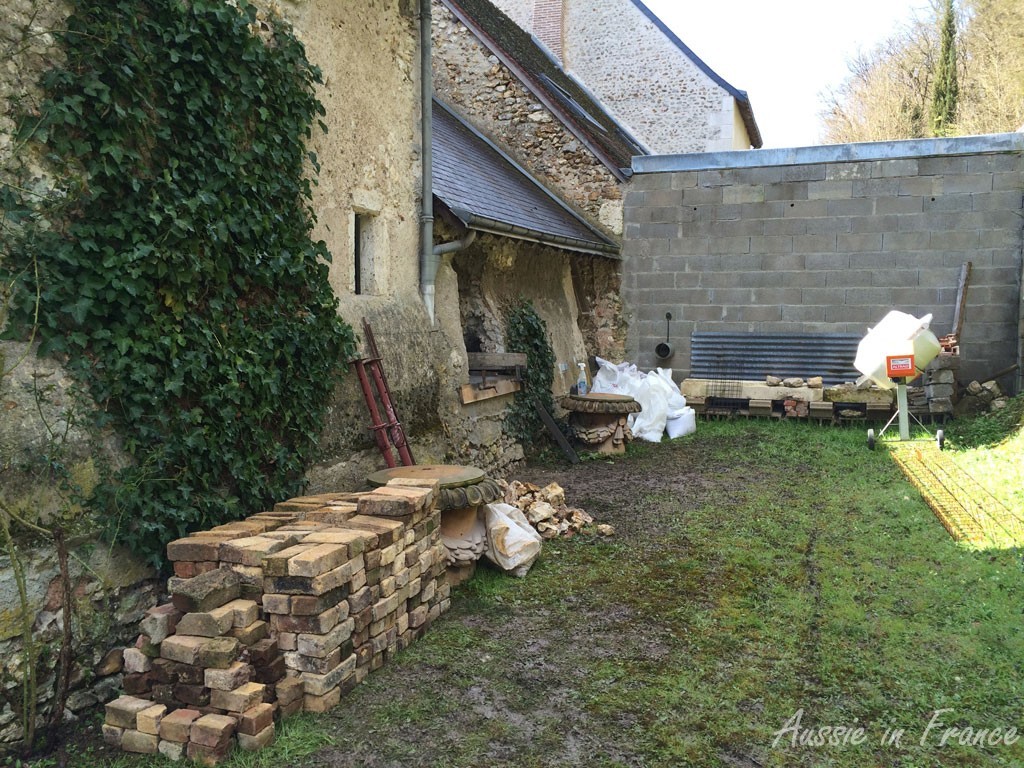
Jean Michel drives home at a maximum of 70 kph instead of the usual 90 kph and we’re both relieved when we make it without further mishap. Next time we’ll take the trailer!
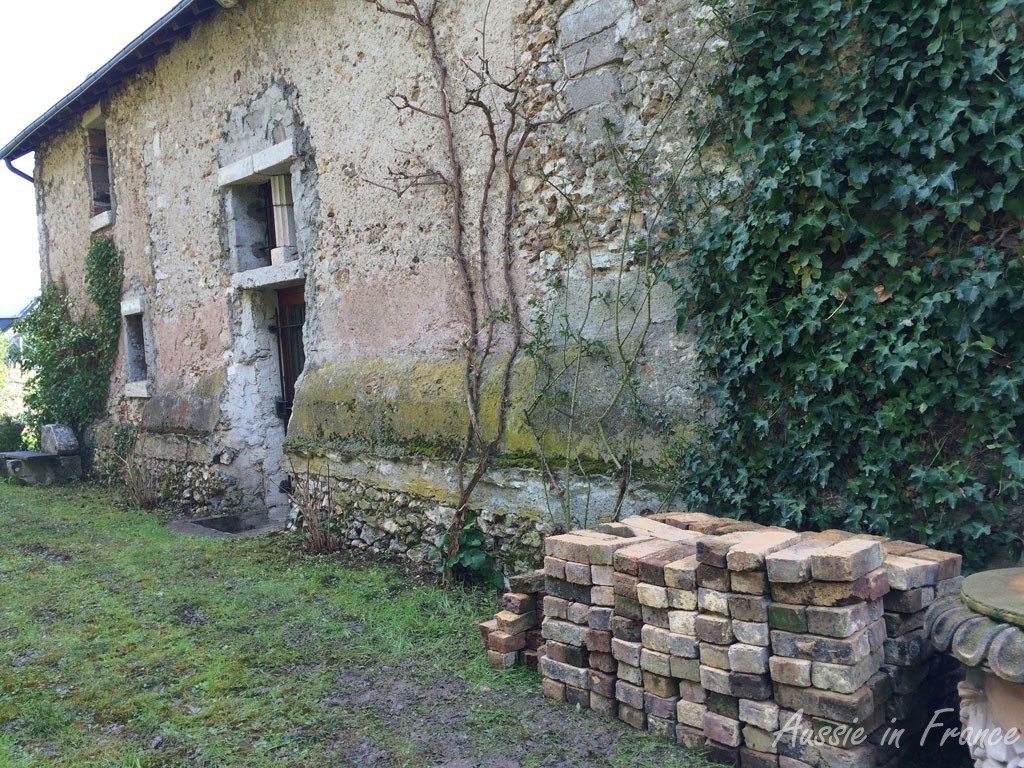
We then spend an hour or so loading the bricks into the wheelbarrow, taking them around the back of the house and unloading them. Does this sound familiar? Particularly if I say it’s also a fast day?
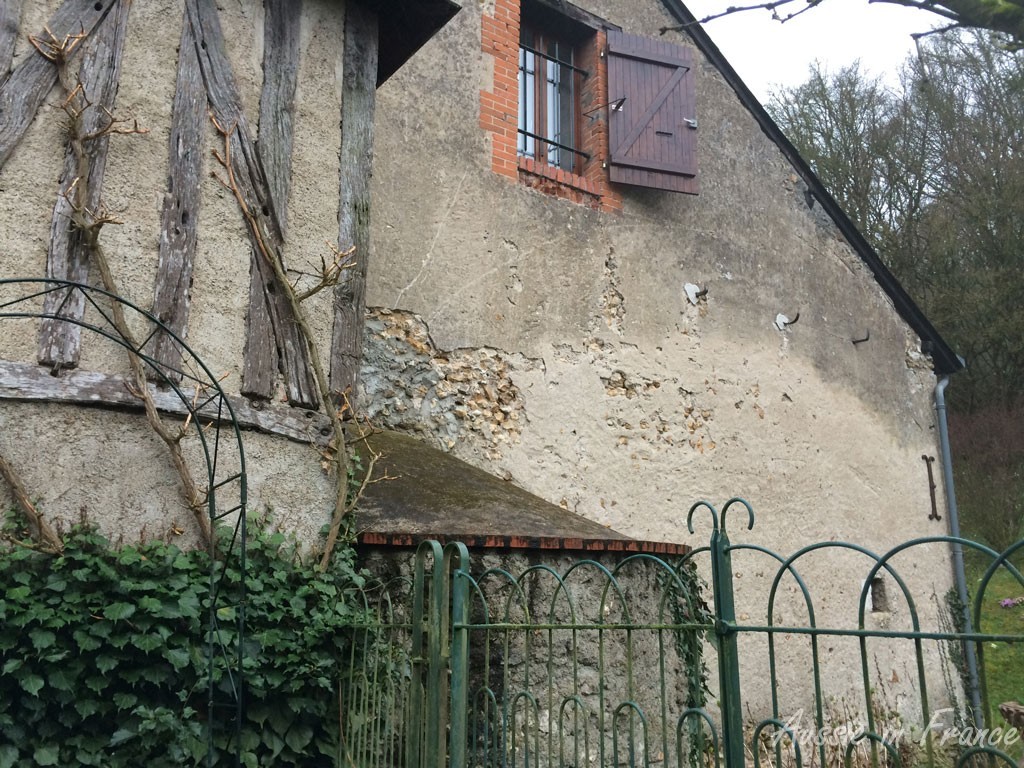




I love the look of these houses
Amazing, isn’t it, to live in a priory!
A labour of love. The hard work will all be worth it. :0)
I’m just hoping Jean Michel will last the distance!
That is an interesting renovation on the priory house. And I had never thought of bricks being traded on Le Bon Coin — but I guess about everything is.
Le Bon Coin is the best resource I know!
The trick with loading bricks into a car is to get them as far forward in the load space as you can so they are sitting between the back and front wheels. Any excess weight at the back in a front wheel drive vehicle needs to be carefully dealt with. I know this from personal experience. I once bought a load of bricks for paving from my local brick factory, which was about 70 km from where my house was. My front wheels were barely touching the road and thus my steering was distinctly dodgy. Added to that it was a very windy day and I was travelling along the Dividing Range (near Toowoomba — I don’t know if you know the area…).
Yes, that’s what we eventually did when we stopped and reloaded them. I don’t envy your experience along the Dividing Range! Next time, we’re taking the trailer.
I like the look of the priory house!
Lovely, isn’t it?
Such beautiful old bricks, Rosemary! And the garden cloches ~ great shopping, you two! Looking forward to seeing Jean Michel’s handiwork in person, should we be able to arrange passing your way ~ and staying at your beautiful gîte ~ when we bike the Loire.
No wonder the car was groaning but I guess your backs were too at the end of the day.
What a wonderful old home you live in.
Surprisingly our backs didn’t suffer too much although I took a precautionary aspirine before going to bed.
What a great project and you are doing wonderful things. It is hard work some days, but the results are worth it!
Yes, the change in light will be extraordinary.